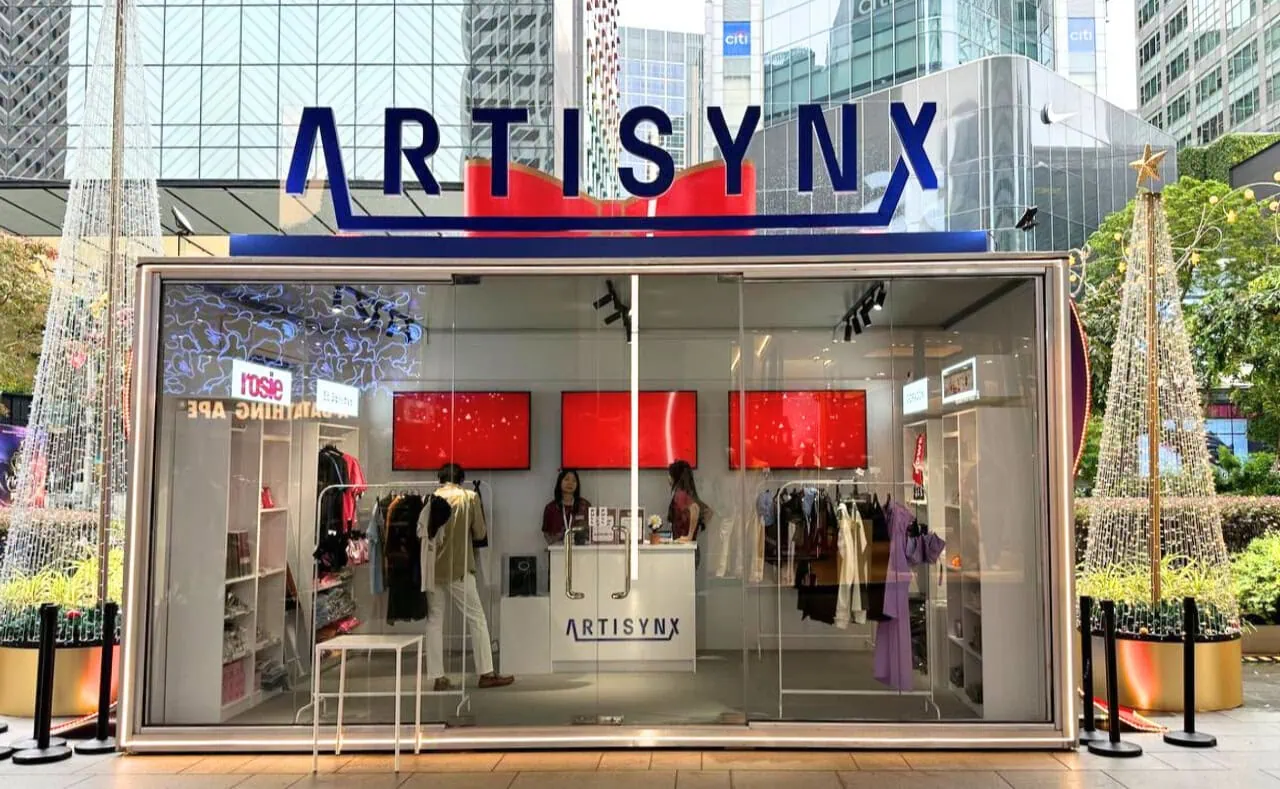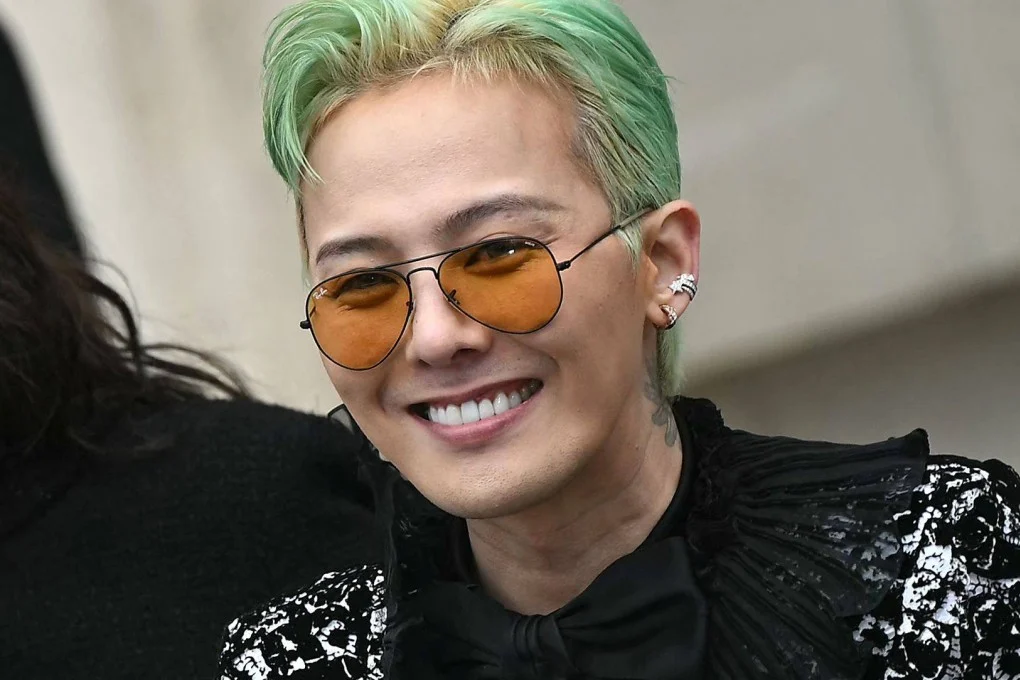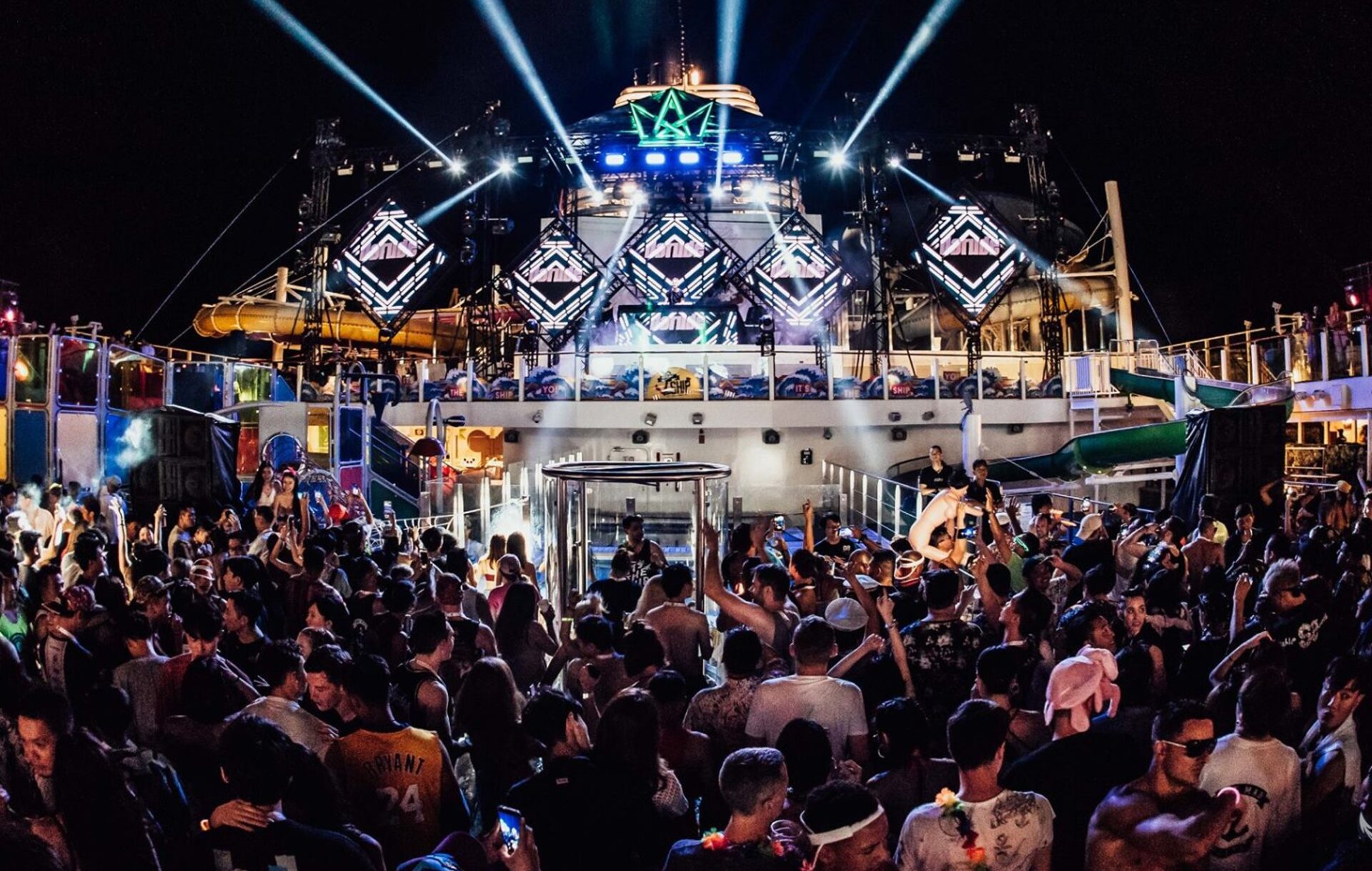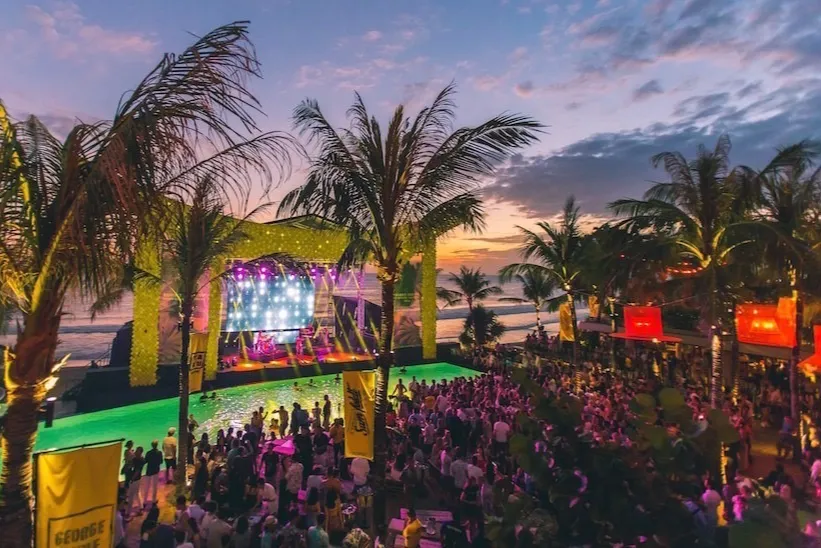The Dandy Collection’s latest space offers dimly lit dining alcoves with beautiful murals depicting roaring Bengal tigers and majestic elephants, an officer’s clubroom where peacock feathers, velvet armchairs, and hunting memorabilia set the scene, a railway-themed space anchored by a cartoon scenescape of Rajasthan by local visual artist TraseOne.
Stepping into the world of Firangi Superstar feels akin to walking onto a film set (specifically a Wes Anderson one) and not into a modern Indian restaurant. Designed as a foreigner’s love letter to India, the 93-seater space is the latest addition to The Dandy Collection’s string of evocative eateries, and perhaps its boldest curated deliberately to be a feast for all five senses.
Filled with colour and opulent textures, anchored by an innovative food and cocktail menu, the project has been a homecoming of sorts for the group’s co-founders Rohit Roopchand and Michael Goodman.
“Since the beginning of forming The Dandy Collection, we have always talked about doing an Indian restaurant.” Shared CEO and co-founder, Rohit Roopchand. “Personally, there has also always been a strong draw towards the cuisine and culture because of my background and heritage. In addition, given Michael’s connection with the country, culture, people, and of course, food, it was something the both of us have always wanted to do.”
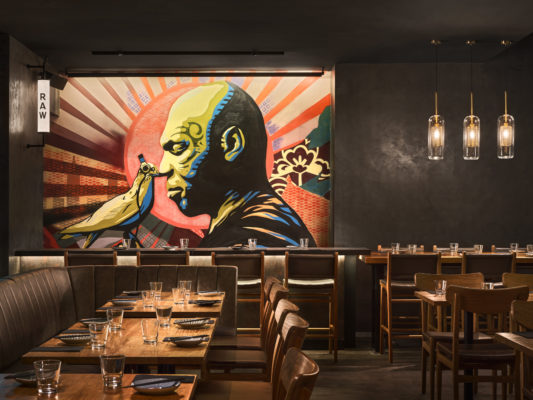
The duo who met in Hong Kong before each making their way to Singapore has made a name for themselves as restauranteurs of eateries that exude a distinctly hip yet unpretentious vibe. Japanese izakaya-style Neon Pigeon was envisioned as “equal parts Tokyo soul and East Village rebel, mixed with block party vibes” according to Rohit, and designed to be all about energy and life. While the inspiration for Middle Eastern restaurant Fat Prince came from two distinctly different hotspots, Istanbul and Miami Beach.
“When we did Fat Prince, it hit me while eating kebabs on the street at 2 am and walking through Karakoy in Istanbul.” shared Michael on its creative touchpoints. “It also hit me while sitting at the Soho House there and while eating tacos at a taco stand in Miami Beach. That taco shop had a big influence on Fat Prince, so you just never know where it will spring up.”
For Firangi Superstar, both drew on their past experiences from Bombay to Rajasthan, Chennai, and Kashmir to conceive its multi-layered personality, some of which became part of a key piece adorning the restaurant. To find out which piece exactly, read on as the co-founders take us through the creative journey and the places and culture that inspire them.

Why this concept now and particularly for Singapore?
Rohit: During this time of COVID-19, the food and beverage space in Singapore has experienced a boom with the borders closed and the population of Singapore being landlocked with eating being one of the favourite pastimes/hobbies. We experienced this at our other venues, Fat Prince and Neon Pigeon that have seen solid demand over the last year since we came out of Circuit Breaker. We felt this was a great time to open a restaurant that transports people to places they would love to travel to in the form of food, drink, and experience. Looking at the landscape for Indian food in Singapore, we noticed a gap in the modern Indian space, which has been hugely popular in places like London, New York, and even recently in India. We felt to be able to represent Indian food in the way we wanted to, this was the route we wanted to go down.
Michael: For me it’s simple. We’re all stuck here! We haven’t been able to feed our souls with that wanderlust we all crave; that inspiring nomadic child in all of us that needs to be nurtured. So we wanted [Firangi Superstar] to be pure fantasy and escape. In your mind, you can leave Singapore for a few hours and not need a passport or quarantine when you get back. There are not many places that allow you to express your imagination in that way.
Talk us through the creative process…
Michael: For design, it was an entirely new process for us. Despite the final venue design being kaleidoscopic, we didn’t let the designers use any colour at all in the initial stages. The entire story needed to be told in black and white first, and only once it was effective could we work on colour palette. It was an intensely scrutinizing process that we’ve never done before, but we felt that was the only way that we could focus on the depth of the story.
From there we went deeper with identity and graphic design than we have before. Of course, we needed a main identity with a logo for the restaurant, but that ended up taking on a set of sub-identity icons for each room since each told its own story. After that we felt although visually the story is there, maybe guests would like to know more as well, so we created a field guide that every table gets. It’s a little booklet that has tales that walk you through the space.
The ways to interact with the space feel endless, but they’re only there if you want them to be. We didn’t want to force people to experience every bit of depth, so they can always just come in and have a nice meal.
The restaurant’s Instagram posts are a riot, particularly the language used with words like “Delightamazement” and “Splendiferously”, what sparked this?
Michael: That’s kind of a funny story. We come up with a “Tone of Voice” for each of our venues; it’s like a personality coming through in print. I was struggling with this one as I was worried the venue was going to be too fancy, too formal; I could hear it in some of the early conversations amongst the team. I felt we needed something that forced us not to take it all too seriously, so I started picturing a protagonist in my head. It was a man of unknown origin; at once a mix of proper gentleman and Monty Python foolishness. So I jotted down a few sentences of random made-up words and melodic sounds. I was quite unsure of it so I shared it with Rohit and was surprised by how much it resonated with him. So it just stuck and our tone of voice was born. I think our team thought I had lost it.
The cultural nuances of Firangi Superstar are like a love-child between Wes Anderson’s The Darjeeling Limited meets Grand Budapest Hotel. Any coincidence?
Michael: “At this point, it would be hard for me to hide that those were influences, but I wouldn’t stop there. I think the visual nature of the venue was inspired by a combination of the past year of binge-watching Netflix during lockdowns and travel restrictions mixed with restaurants we’re passionate about. So any film that captured our imaginations could show up somehow, from the colour mastery of Wes Anderson to the fascination with words in The Personal History of David Copperfield, to the feeling of transitioning from outsider to being at home in Outsourced; and the list goes on. At the same time, we really studied Coya, probably the world’s coolest Peruvian restaurant brand, and what made their design so successful. So many things were brought together with our own imagination to bring this to life. Ultimately we used every tool at our disposal to do the story we wanted to tell justice.
Art has been a key feature at your eateries, the huge mural at Neon Pigeon by Zero and now a Rajasthan landscape by Trase One. Could you tell us more about this latest commission?
Michael: I don’t think we ever set out from the outset with art in mind. We follow the journey of design and that process takes us in so many directions. As we’re on that journey sometimes we see a moment that calls for art and then, as passionate appreciators, we dive in.
For this piece, we saw the train window as a great place to have fun. I was definitely inspired by the look of the train windows in The Grand Budapest Hotel when I reached out to Trase One. However, there’s so much more that’s personal in there. If you look closely you would see the place where I got married, my nieces and nephew, and artistic representations of a number of photographs we took during our journeys in India. To most, it looks just like a fun Rajasthani landscape, but for me, it’s like a history of our last trip there.
As restauranteurs you must know some of the best spots around the world, what are some of your favourites?
Rohit: Favourite restaurants are so hard to pick but ones that I always want to go back to are: Nobu, Balthazar, Tartine, Nopalito – the hole in the wall places are often the best like John’s Pizza for a slice in New York or Caracas for Arepas there too, Maroush in London for Shawarmas and Lebanese food.
Michael: As far as actual venue inspiration, I tend to get it more for food or service than for design and experience (I get that inspiration from travel and film usually). But I also have my favourites. A big yes to John’s of Bleeker in NYC for Pizza and Nopalito in San Francisco for Mexican, so I’m with Rohit on those. Also Lulu La Delizia in Perth for pasta, Embla in Melbourne for simple yet exceptional wood oven cooking, Bombay Canteen in Mumbai, Yardbird in Hong Kong as well as both Tickets and Succulent in Barcelona.
Culture-wise, what books/music/art inspire your business?
Rohit: Reading is a big part of what I do in my downtime, from fiction to biographies to self-improvement. Some of the more impactful books have been “Traction” by Gino Wickman and “The Five Dysfunctions of a Team” by Patrick Lencioni. As a business, we value work-life balance and quality of life, which we hope flows through our organisation. Work hard when you want to but also make sure to take the time for other priorities in life.
Michael: I’m going to pull a Derrick Zoolander and say Madonna inspires me but that I don’t listen to her music. In all seriousness, I don’t, but I’m always impressed how she keeps reinventing her style, and I really respect that and aspire to it. Rohit and I share the same company culture reading list, so I live and die by “The Five Dysfunctions of a Team”. I also am a believer in Simon Sinek’s messages. His books, “The Infinite Game” and “Start with Why” have really shaped our businesses as well.

Finally, which superstar dishes and drinks should one order at Firangi Superstar?
Michael: On the food side I’m in love with This is not Aloo Gobi [cauliflower done in three ways]. It was the first thing Chef Thiru made for me when we asked him to consider doing this project, and conceptually it was a revelation for me. I had the same experience with Salvador Thali [pumpkin steeped in a sambhar marinade then roasted and charred in the tandoor]. I know this town seems to want to order meat and more meat, but switch to a vegetarian dish for a night and you will not be disappointed because this is stunning. On the drinks side, I’m still working my way through the entire Gin & Tonic Express list! I love all the subtle differences between them and there’s something quite civilised about a Gin & Tonic.
Firangi Superstar is located at 20 Craig Rd, #01-03, Singapore 089692. For more information, go to www.firangisuperstar.com
Discover more talented chefs, restaurant reviews and more in our Lifestyle section.



